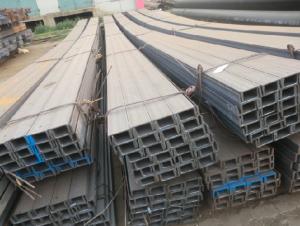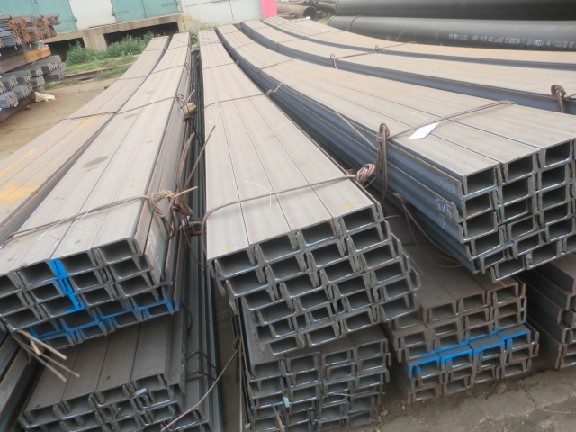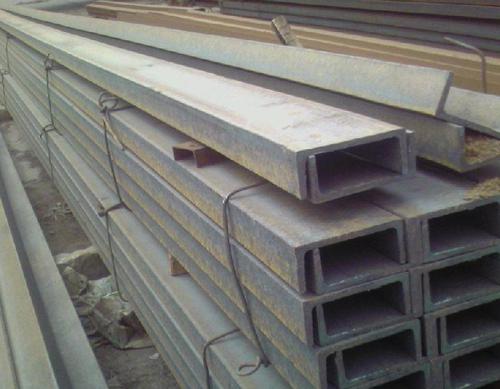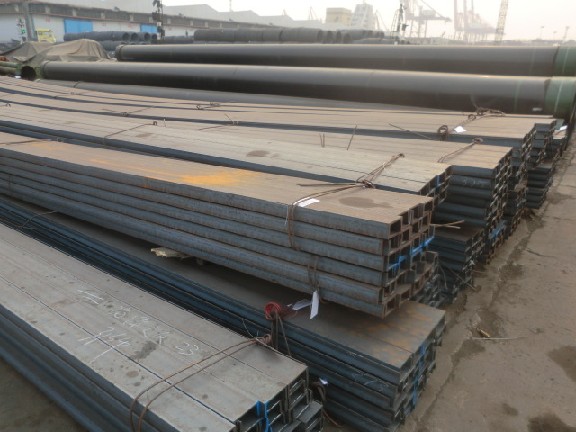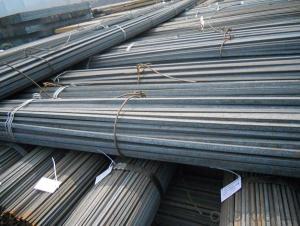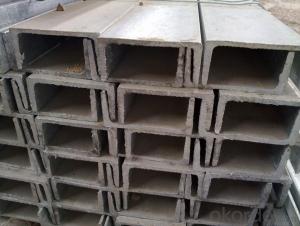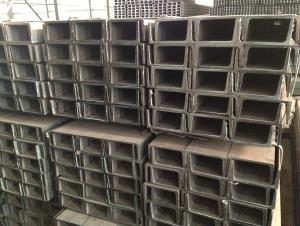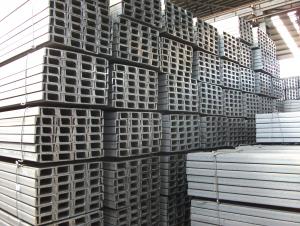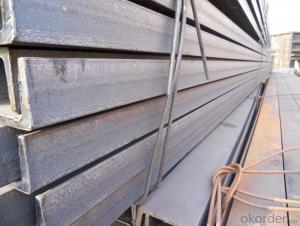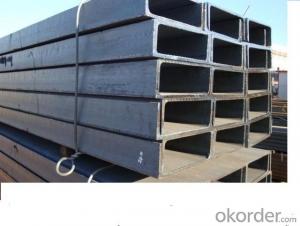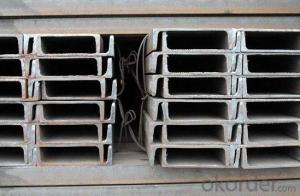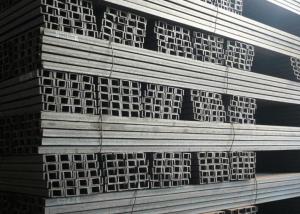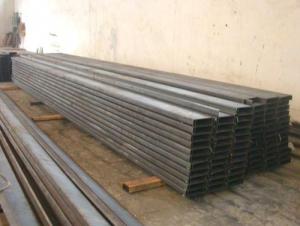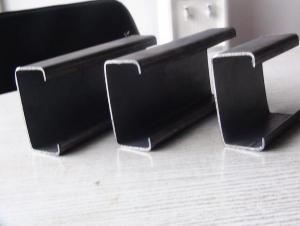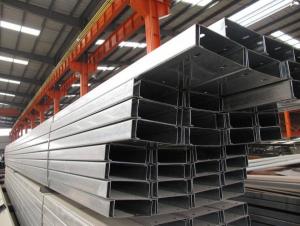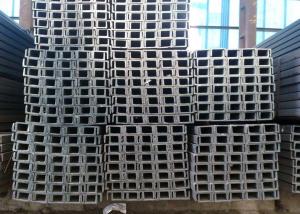Q235B GB707-808 Standard Steel Channels With High Quality
- Loading Port:
- China main port
- Payment Terms:
- TT or LC
- Min Order Qty:
- 25 m.t
- Supply Capability:
- 2000 m.t/month
OKorder Service Pledge
OKorder Financial Service
You Might Also Like
Product Description:
OKorder is offering Q235B GB707-808 Standard Steel Channels With High Quality at great prices with worldwide shipping. Our supplier is a world-class manufacturer of steel, with our products utilized the world over. OKorder annually supplies products to European, North American and Asian markets. We provide quotations within 24 hours of receiving an inquiry and guarantee competitive prices.
Product Applications:
Q235B GB707-808 Standard Steel Channels With High Qualityare ideal for structural applications and are widely used in the construction of buildings and bridges, and the manufacturing, petrochemical, and transportation industries.
Product Advantages:
OKorder's Q235B GB707-808 Standard Steel Channels With High Qualityy are durable, strong, and resist corrosion.
Main Product Features:
· Premium quality
· Prompt delivery & seaworthy packing (30 days after receiving deposit)
· Corrosion resistance
· Can be recycled and reused
· Mill test certification
· Professional Service
· Competitive pricing
Product Description:
Specifications of Hot Rolled Channel Steel:
We are definitely speciallizing in manufacturing and supplying channel steel as per japanese standard, which is characterised with high mechanical strength and competitive prices.
The steel u channel will be packed in bundle with steel wire at each end of every bundle and color marking in order to help the customer to recognize his goods more easily at sight.
And steel u channel could be loaded into 20ft or 40ft container, or by bulk cargo. If the weight of each bundle reaches less than 3.5 mt, the loading by break bulk cargo should be choosed. When the weight of each bundle reaches less than 3mt, the loading by container should be choosed.
As for the transportaion from mill to loading port, the truck will be usually used. And the maximum quantity for each truck is 40mt.
All in all, we could do in accordance with customer's request.
Trade terms: FOB, CFR, CIF
FAQ:
Q1: Why buy Materials & Equipment from OKorder.com?
A1: All products offered byOKorder.com are carefully selected from China's most reliable manufacturing enterprises. Through its ISO certifications, OKorder.com adheres to the highest standards and a commitment to supply chain safety and customer satisfaction.
Q2: How do we guarantee the quality of our products?
A2: We have established an advanced quality management system which conducts strict quality tests at every step, from raw materials to the final product. At the same time, we provide extensive follow-up service assurances as required.
Q3: How soon can we receive the product after purchase?
A3: Within three days of placing an order, we will begin production. The specific shipping date is dependent upon international and government factors, but is typically 7 to 10 workdays.
Images:
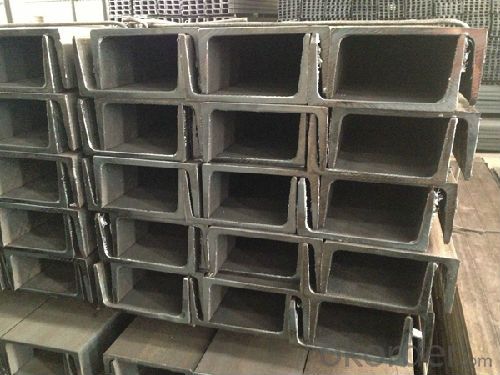
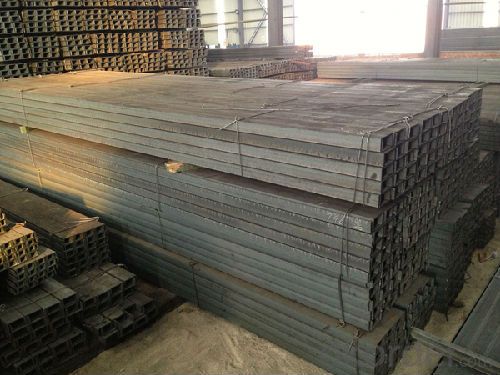
- Q: How do steel channels contribute to the overall safety of a structure?
- Steel channels contribute to the overall safety of a structure in several ways. Firstly, steel channels provide structural support and stability to the building. They are often used as load-bearing members in the construction industry, helping to distribute the weight of the structure evenly and efficiently. This ensures that the building can withstand various external forces such as wind, earthquakes, and heavy loads without collapsing. By providing a strong framework, steel channels enhance the overall safety and structural integrity of the building. Secondly, steel channels play a crucial role in fire safety. Steel is a non-combustible material, and when used as channels, it can help prevent the spread of fire within a structure. In the event of a fire, steel channels act as fire barriers, restricting the movement of flames and heat to specific areas. This containment helps to limit the damage caused by fire and provides occupants with more time to evacuate safely. Additionally, steel channels are resistant to corrosion and deterioration, making them highly durable and reliable. Unlike other materials, steel does not rot, warp, or degrade over time. This longevity ensures that the structure remains stable and secure in the long run, reducing the risk of accidents and structural failures. Furthermore, steel channels are often used in the construction of seismic-resistant structures. With their high strength and flexibility, steel channels can absorb and dissipate seismic energy during an earthquake. This ability to withstand seismic forces helps to minimize structural damage and ensures the safety of the occupants within the building. In conclusion, steel channels contribute significantly to the overall safety of a structure by providing structural support, fire resistance, durability, and seismic resistance. Their use in construction enhances the stability, strength, and integrity of the building, ensuring the safety and well-being of its occupants.
- Q: 120*53*5.5 what's the weight of channel steel?
- 120 * 53 * 5.5 12 # 12.06kg/m
- Q: What about the specification of channel steel?
- The specifications are expressed in millimeters of height (H) * leg width (b) * waist thickness (d), such as 80*43*5, which means waist height is 80 mm, leg width is 43 mm, waist thickness is 5 mm channel, or 8# channel steel.
- Q: Channel steel is mainly used in building structures
- Channel steel is a strip of steel with a cross section. Section steel with groove shape. Channel steel is a kind of carbon structural steel used for construction and machinery. It is a complex section steel. Its cross section has a groove shape. Channel steel is mainly used in building structure, curtain wall engineering, mechanical equipment and vehicle manufacturing, etc.. In use, it requires better welding, riveting performance and comprehensive mechanical properties.
- Q: No. 20 I-beam span 3 meters, fixed on both sides, what is the maximum weight to bear? No. 10 channel steel, span 2.5 meters, the other ibid
- I-beam is also called steel girder (English name Universal Beam). It is a strip of steel with an I-shaped section. I-beam is divided into ordinary I-beam and light I-beam, H steel three. It is a section steel whose shape is trough.
- Q: Can steel channels be used for supporting solar panels?
- Yes, steel channels can be used for supporting solar panels. Steel channels are commonly used in construction for their strength and durability, making them suitable for supporting the weight of solar panels. They provide a stable and reliable structure to hold the panels in place, ensuring their proper installation and functioning. Steel channels can be easily customized and adjusted to fit the specific requirements of the solar panel installation, making them a versatile choice for supporting solar panels. Additionally, steel channels offer resistance against weather conditions, ensuring the long-term stability and safety of the solar panel system.
- Q: Can steel channels be used in high-temperature applications?
- Yes, steel channels can be used in high-temperature applications. Steel channels are known for their excellent resistance to high temperatures, making them suitable for various industrial applications such as furnaces, boilers, and heat exchangers. The high melting point and thermal stability of steel channels allow them to maintain their structural integrity and performance under high-temperature conditions.
- Q: How do you mark the types of steel such as channel, I-beam and so on in the document?
- Channel letters are in capital letters "C" or "half brackets" [...], and "I" in capitals"
- Q: Are steel channels suitable for use in the construction of elevated storage systems?
- Yes, steel channels are suitable for use in the construction of elevated storage systems. Steel channels offer several advantages that make them a popular choice for such applications. Firstly, steel channels are known for their high strength and durability. They can withstand heavy loads and provide structural stability, making them ideal for supporting elevated storage systems. Additionally, steel channels have excellent resistance to corrosion, which is crucial in storage systems where exposure to moisture or harsh environmental conditions may occur. Furthermore, steel channels are versatile and can be easily fabricated into various shapes and sizes to meet specific design requirements. This allows for flexibility in constructing storage systems of different dimensions and configurations. Steel channels also offer ease of installation and can be efficiently connected using various methods such as welding or bolting. Another advantage of using steel channels in elevated storage systems is their cost-effectiveness. Steel is a relatively affordable material compared to alternatives like aluminum or composite materials. Additionally, steel channels require minimal maintenance over their lifespan, reducing long-term costs. Overall, the strength, durability, resistance to corrosion, versatility, and cost-effectiveness of steel channels make them highly suitable for use in the construction of elevated storage systems.
- Q: Can steel channels be used in temporary structures?
- Yes, steel channels can be used in temporary structures. Steel channels are strong and durable, making them a suitable choice for temporary structures that require stability and support. Additionally, steel channels can be easily assembled and disassembled, making them convenient for temporary structures that may need to be relocated or dismantled in the future.
Send your message to us
Q235B GB707-808 Standard Steel Channels With High Quality
- Loading Port:
- China main port
- Payment Terms:
- TT or LC
- Min Order Qty:
- 25 m.t
- Supply Capability:
- 2000 m.t/month
OKorder Service Pledge
OKorder Financial Service
Similar products
Hot products
Hot Searches
Related keywords
